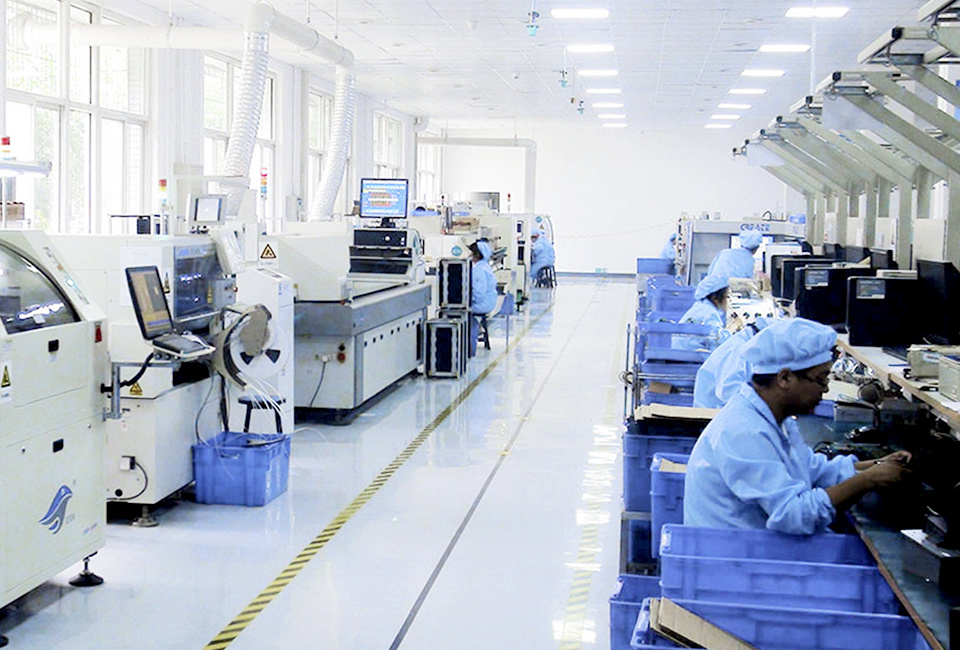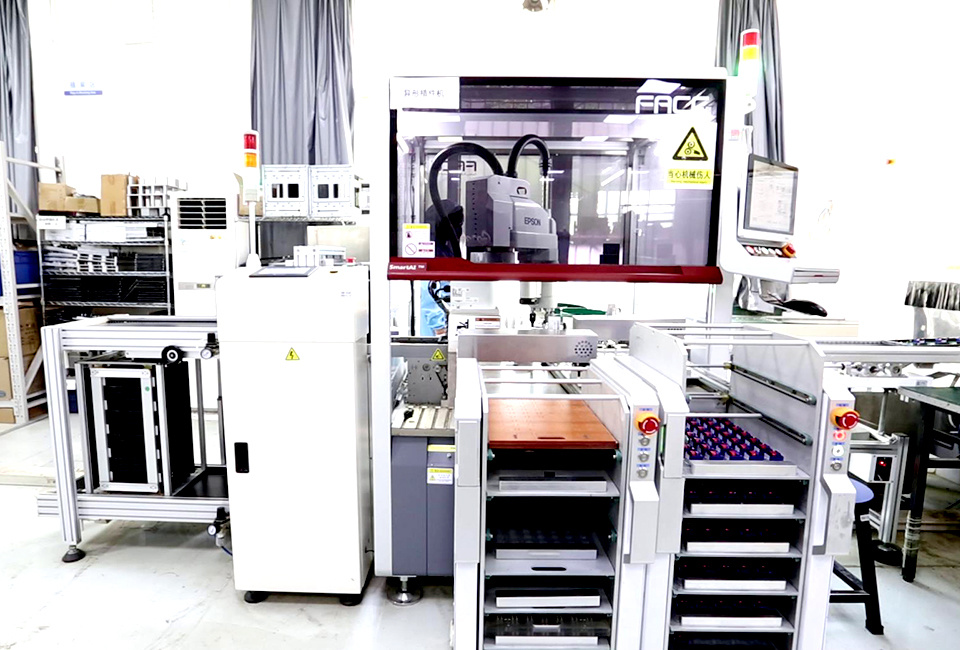Optimizing Flow Measurement in Pharmaceutical Water Quality Analysis with Sanitary Digital Paddle Wheel Flow Sensors
2025-06-26
---
In the pharmaceutical and healthcare sectors, maintaining high water quality is crucial for both product efficacy and regulatory compliance. One of the most effective tools for measuring the flow of water in these environments is the Sanitary Digital Paddle Wheel Flow Sensor. This type of sensor is specifically designed to meet the stringent requirements of the pharmaceutical industry, ensurin
---
In the pharmaceutical and healthcare sectors, maintaining high water quality is crucial for both product efficacy and regulatory compliance. One of the most effective tools for measuring the flow of water in these environments is the Sanitary Digital Paddle Wheel Flow Sensor. This type of sensor is specifically designed to meet the stringent requirements of the pharmaceutical industry, ensuring accurate and reliable flow measurements in various applications.
Sanitary Digital Paddle Wheel Flow Sensors operate on the principle of paddle wheel rotation, which is directly influenced by the flow of the liquid passing through the sensor. When water flows, it causes the paddle wheel to rotate, and the speed of this rotation is proportional to the flow rate. These sensors are equipped with digital output capabilities, allowing for real-time data transmission and easier integration with existing monitoring systems.
One of the primary benefits of using Sanitary Digital Paddle Wheel Flow Sensors is their sanitary design. They are often constructed from high-grade materials that meet strict hygiene standards, making them ideal for applications in which contamination must be avoided. This is especially important in pharmaceutical manufacturing processes where the purity of water can significantly impact the quality of the final product. Additionally, these sensors are designed for easy cleaning and maintenance, ensuring that they can consistently provide accurate readings over time.
Moreover, the digital nature of these sensors offers numerous advantages over traditional analog sensors. Digital output provides higher accuracy, reduced signal degradation over long distances, and the ability to integrate with advanced data logging and monitoring systems. This capability is invaluable for pharmaceutical companies that need to track water quality parameters meticulously to comply with regulatory requirements.
In addition to their technical benefits, Sanitary Digital Paddle Wheel Flow Sensors enhance operational efficiency. By providing precise flow measurements, facilities can optimize water usage, reduce waste, and ensure that processes operate within the desired parameters. This not only contributes to cost savings but also supports sustainability initiatives within the industry.
In conclusion, the integration of Sanitary Digital Paddle Wheel Flow Sensors in pharmaceutical water quality analysis can lead to improved accuracy, reliability, and compliance with industry standards. Their sanitary design and digital functionality make them an essential tool for ensuring that water quality meets the high standards required in the pharmaceutical sector. By investing in these advanced flow sensors, organizations can enhance their operational capabilities and maintain the integrity of their water quality management systems.
In the pharmaceutical and healthcare sectors, maintaining high water quality is crucial for both product efficacy and regulatory compliance. One of the most effective tools for measuring the flow of water in these environments is the Sanitary Digital Paddle Wheel Flow Sensor. This type of sensor is specifically designed to meet the stringent requirements of the pharmaceutical industry, ensuring accurate and reliable flow measurements in various applications.
Sanitary Digital Paddle Wheel Flow Sensors operate on the principle of paddle wheel rotation, which is directly influenced by the flow of the liquid passing through the sensor. When water flows, it causes the paddle wheel to rotate, and the speed of this rotation is proportional to the flow rate. These sensors are equipped with digital output capabilities, allowing for real-time data transmission and easier integration with existing monitoring systems.
One of the primary benefits of using Sanitary Digital Paddle Wheel Flow Sensors is their sanitary design. They are often constructed from high-grade materials that meet strict hygiene standards, making them ideal for applications in which contamination must be avoided. This is especially important in pharmaceutical manufacturing processes where the purity of water can significantly impact the quality of the final product. Additionally, these sensors are designed for easy cleaning and maintenance, ensuring that they can consistently provide accurate readings over time.
Moreover, the digital nature of these sensors offers numerous advantages over traditional analog sensors. Digital output provides higher accuracy, reduced signal degradation over long distances, and the ability to integrate with advanced data logging and monitoring systems. This capability is invaluable for pharmaceutical companies that need to track water quality parameters meticulously to comply with regulatory requirements.
In addition to their technical benefits, Sanitary Digital Paddle Wheel Flow Sensors enhance operational efficiency. By providing precise flow measurements, facilities can optimize water usage, reduce waste, and ensure that processes operate within the desired parameters. This not only contributes to cost savings but also supports sustainability initiatives within the industry.
In conclusion, the integration of Sanitary Digital Paddle Wheel Flow Sensors in pharmaceutical water quality analysis can lead to improved accuracy, reliability, and compliance with industry standards. Their sanitary design and digital functionality make them an essential tool for ensuring that water quality meets the high standards required in the pharmaceutical sector. By investing in these advanced flow sensors, organizations can enhance their operational capabilities and maintain the integrity of their water quality management systems.
Sanitary Digital Paddle Wheel Flow Sensor
RELATED NEWS
2025-06-26
---
In the pharmaceutical and healthcare sectors, maintaining high water quality is crucial for both product efficacy and regulatory compliance. One of the most effective tools for measuring the flow of water in these environments is the Sanitary Digital Paddle Wheel Flow Sensor. This type of sensor is specifically designed to meet the stringent requirements of the pharmaceutical industry, ensurin
Maximizing Efficiency: Integrating Ultrasonic Open Channel Flow Meters in Healthcare Settings
2025-06-19
Maximizing Efficiency: Integrating Ultrasonic Open Channel Flow Meters in Healthcare Settings
Table of Contents
1. Introduction to Ultrasonic Open Channel Flow Meters
2. Importance of Accurate Flow Measurement in Healthcare
3. Understanding Ultrasonic Technology
4. Applications of Ultrasonic Open Channel Flow Meters in Healthcare
5. Benefits of Integrating Ultrasonic Flow Mete
2025-06-12
In the pharmaceutical and healthcare sectors, water quality is of paramount importance. One of the critical components in maintaining high water quality is the Single Stage RO Controller. This device plays a vital role in ensuring that the reverse osmosis (RO) systems operate efficiently and effectively, thereby delivering purified water that meets stringent industry standards.
A Single Stage RO C





